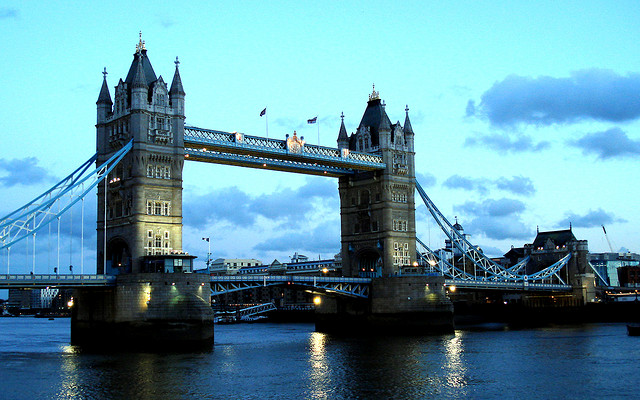One of the most important cities in Europe, is the capital of the Czech Republic, located on the banks of the Vltava River, where the second oldest bridge in the country stands.
After the flood that caused the destruction of the Roman bridge, the Judith Bridge, in 1357 the current bridge construction was initiated by order of King Carlos IV, name given to the bridge in his honor. Work was completed in the early fifteenth century, becoming the largest trading connection between Eastern and Western Europe, and the only way to cross the river and connect Prague Castle, the Old Town and the surrounding area until the late nineteenth century .

Initially the bridge was named Puente de Praga (Pražský most) or Stone Bridge (Kamenný most), but since 1870 it was called Charles Bridge (Karl?v most).
With its 516 meters long and ten meters wide, the bridge connects the Old Town, or Stare Mesto with the town, which in Czech is Mala Strana, holding up with sixteen arches. Under the moonlight, the Charles Bridge transports us to medieval times. Long ago there were four lanes used by carriages, today it is a pedestrian bridge and a large influx of tourists stop to look at the works of artists and merchants that are on the bridge.
Charles Bridge has three towers that protect it, two in the Lesser Town and a tower at the end of the Old City. This last tower is considered as one of the most amazing Gothic style ones in the world. Each side of the bridge is decorated with thirty baroque statues dating from the mid-1700s.
The thirty baroque statues were made between 1683 and 1714, and represent the saints venerated at that time. The most prominent artists such as Jan Brokoff Bohemia, Matthias Braun, Ferdinand Brokoff, Michael Brokoff, among others, were the authors of these works. Currently the original statues are on display in the National Museum, being replaced by replicas of the bridge since 1965.
One of these statues is that of San Juan Nepomuceno, the first image that was placed on the bridge. Juan Nepomuceno was thrown into the river from the bridge in 1393 by order of Wenceslas IV, being sanctified in the eighteenth century. People often make a wish, putting their hand on the statue, so the wish will be granted.
Through the years the Charles Bridge suffered several damages by numerous floods and has witnessed many events, such as the Thirty Years War, and the cannon shootings during the days of the Revolution in 1848, among others.
To visit the Charles Bridge you can use public transport. If you go underground, you take line A and get off at Staromestska. If instead you decide to use the tram, you can use lines 17 and 18, and get off at the Namesti Krizovnicke stop .
Visit the capital of the region of Bohemia, rent apartments in Prague and stroll through one of the historical bridges that united Europe.

 English
English